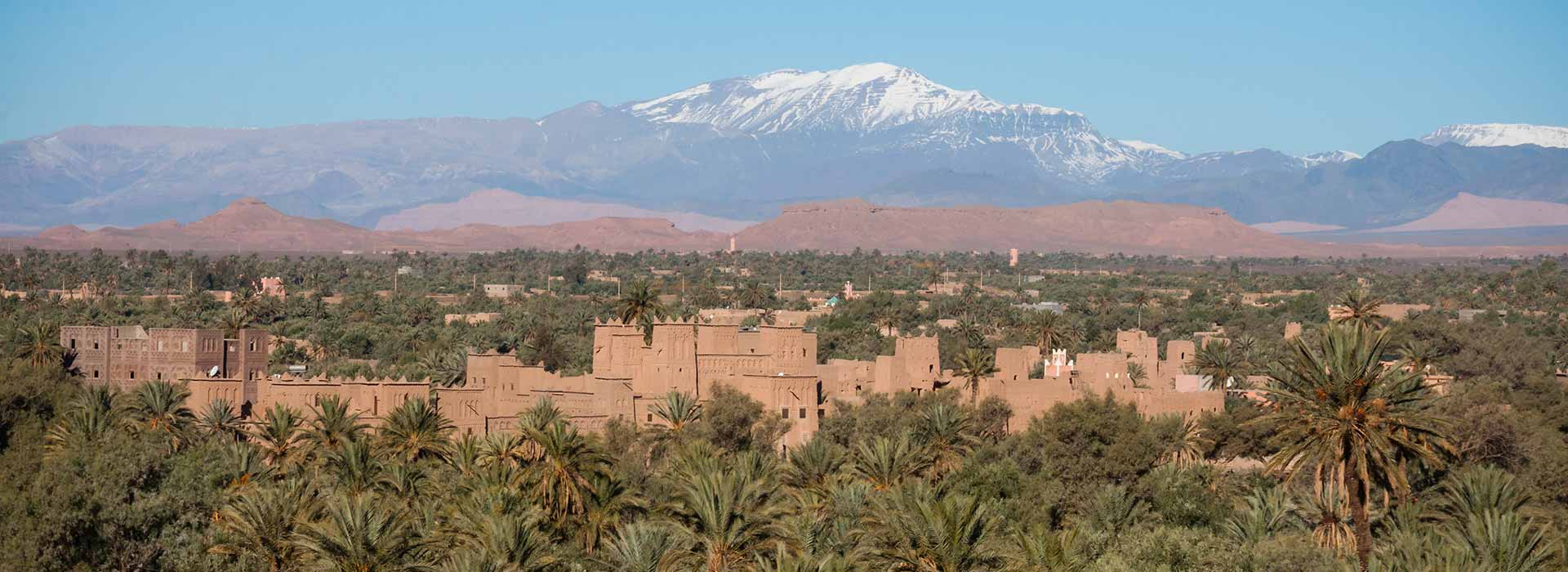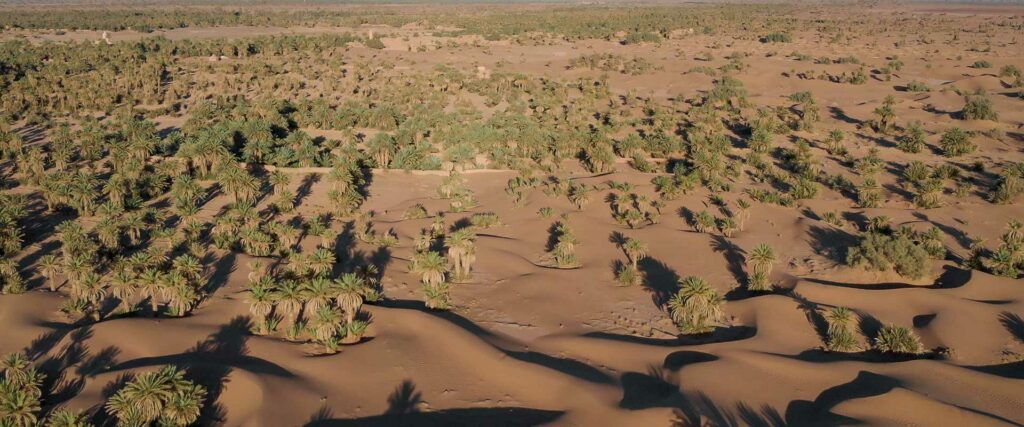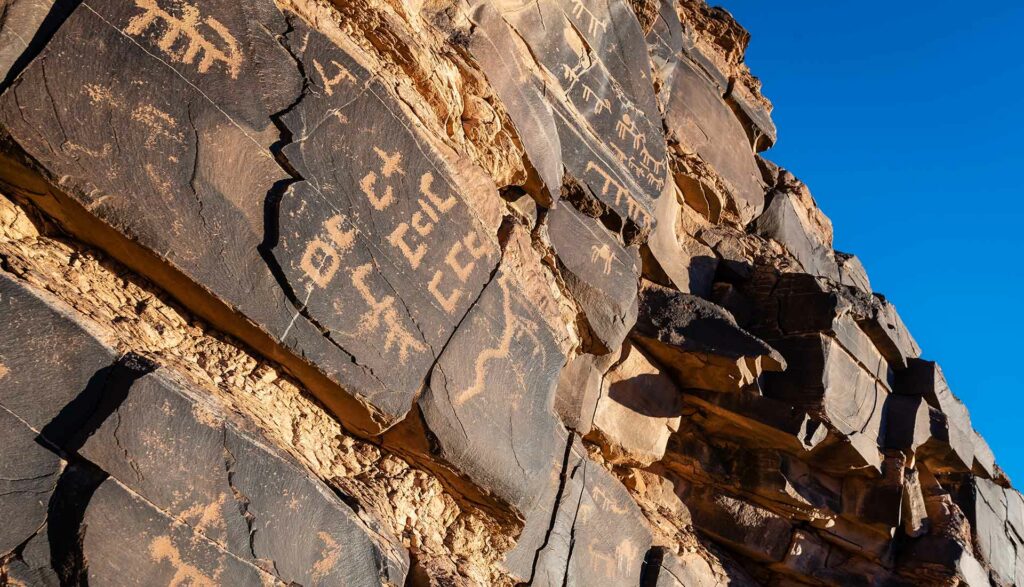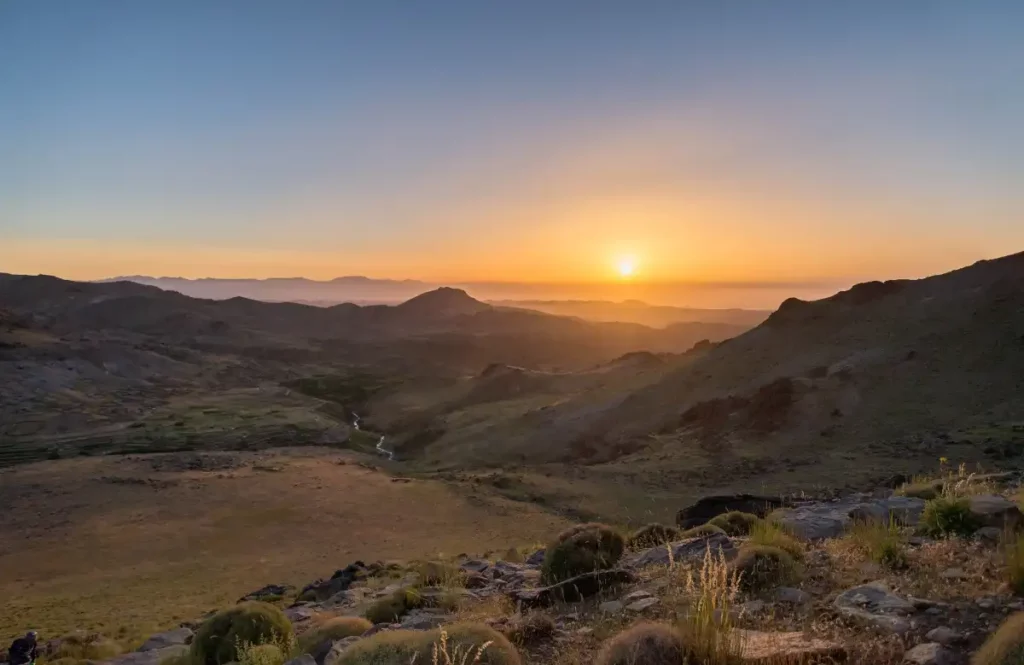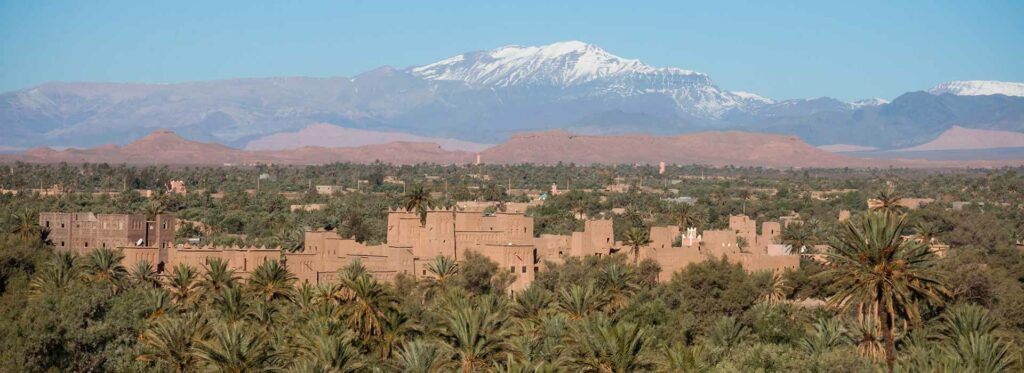A palm grove that lives to the rhythm of the seasons
At the foot of the Atlas Mountains, the palm grove of Skoura stands out in beauty. Its gardens abound with date palms and other fruit trees such as olive trees, pomegranate trees, almond trees, apricot trees, fig trees… These trees themselves protect the lower crops of wheat, barley, alfalfa, corn… that grow up to the edge of the riverbank.
According to oral tradition, Skoura was once a large lake populated by various bird species, the most common of which was the partridge, known in Amazigh as Askour or Taskourt for its feminine form.
Different communities migrated from the neighboring mountains and the edges of the desert, especially from the Drâa and Tafilalet regions, to settle along the shores of this lake. Legend has it that the majority community, coming from Drâa, then nicknamed the valley of olives, brought with them the olive tree to plant in this well-watered territory. These communities then drained the lake to grow gardens of palm trees, olive trees, or pomegranate trees… Over the years, the place was named Skoura through the repetition of the word Askour or partridge, as a name distorted over time.
The oasis of Skoura thrives and declines according to the whims of the seasons. Rainy years turn it into an enchanted paradise, while periods of drought bring desolation and hardship. The Dadès River flows persistently through it and crosses many villages of the palm grove, including the douar Sidi Flah, while the Hajjaj River, which runs the length of the palm grove, only nourishes the gardens with its waters during periods of flooding. The rest of the time, this river is dry.
A lire : The oasis bears the seeds of tomorrow’s Morocco, and of the world
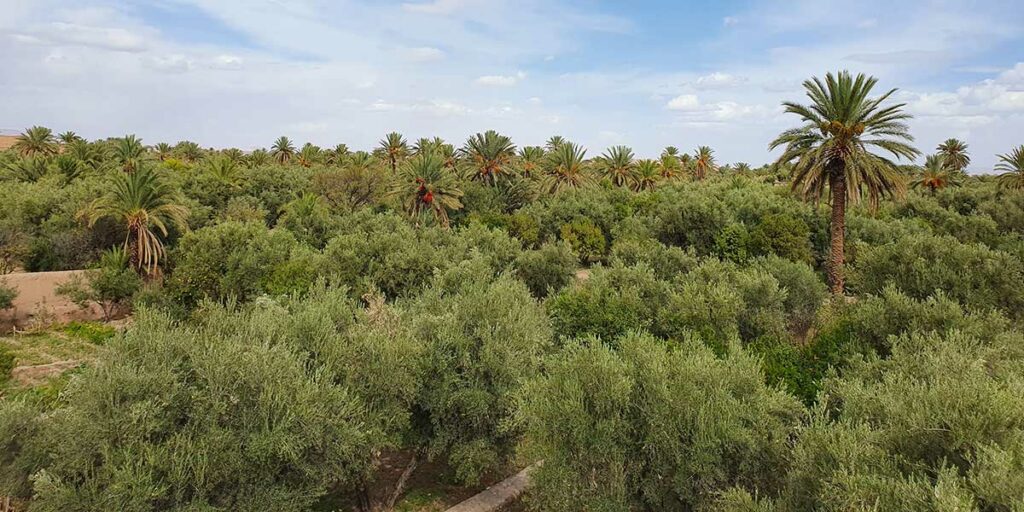
The population of Skoura mainly sustains itself through agriculture. The scarcity of surface water has driven the inhabitants of the palm grove since ancient times to devise a clever irrigation system known as the khettara or qanat, consisting of an underground network of channels designed to capture water from the mountainsides and distribute it to the various villages and their family gardens. These draining galleries thus provide a constant and regular source of water for irrigating the fields throughout the seasons.
Kettara : the khettara technique is considered one of the oldest systems for water management in oasis agriculture, as its origins are traced back to ancient Persia over 3,000 years ago. In Afghanistan, they are called “kiraz,” in Iran “qanat,” in Algeria “fouggara,” in Morocco “khettara,” in Yemen “aflaj,” in China “karez,” and in Syria “kanawat.”
The times of desolation have nevertheless deeply marked the local collective memory. During the first half of the 20th century, drought struck the entire region, leading to famine and typhus. Mr. Mrabou, a native of the Skoura palm grove, holds distressing memories of this period and testifies:
« The weakened people were agonizing desperately. Death constantly decimated families. The quantities of rice distributed at the center of Skoura to the impoverished population were derisory. This tragedy triggered a massive exodus of the population to the north, especially to Marrakech and Casablanca… »
M. Mrabou
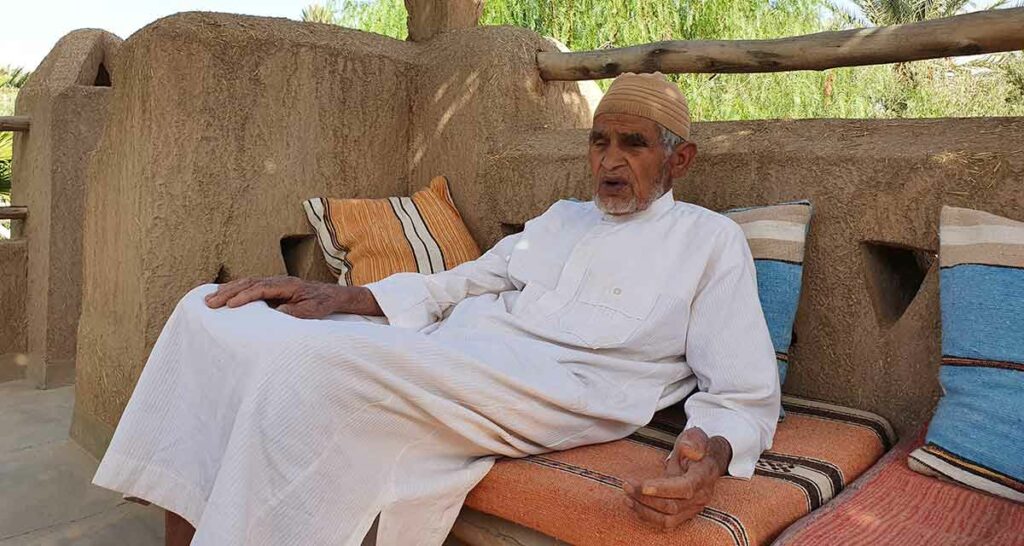
Alongside these dark days, the Palmeraie of Skoura has experienced other periods of prosperity that have turned it into a magnificent fairyland. Times when the sky showered it with torrents of rain. The old man rejoices:
« I remember the years when water flowed abundantly on the surface in Amzzaourou, especially in the douars of Tajannat, Boumehcha, Oulad Brahim. When we dug, water would gush out at 3 or 4 meters deep. »
Mohamed Mbarou
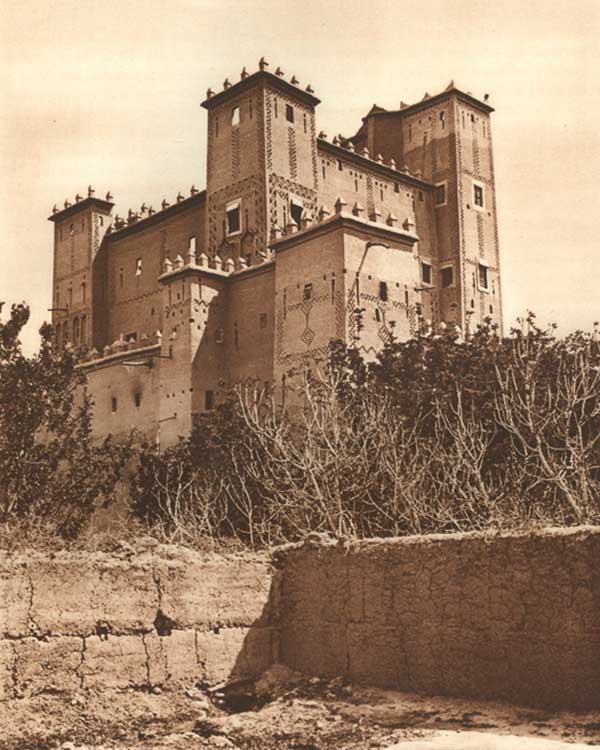
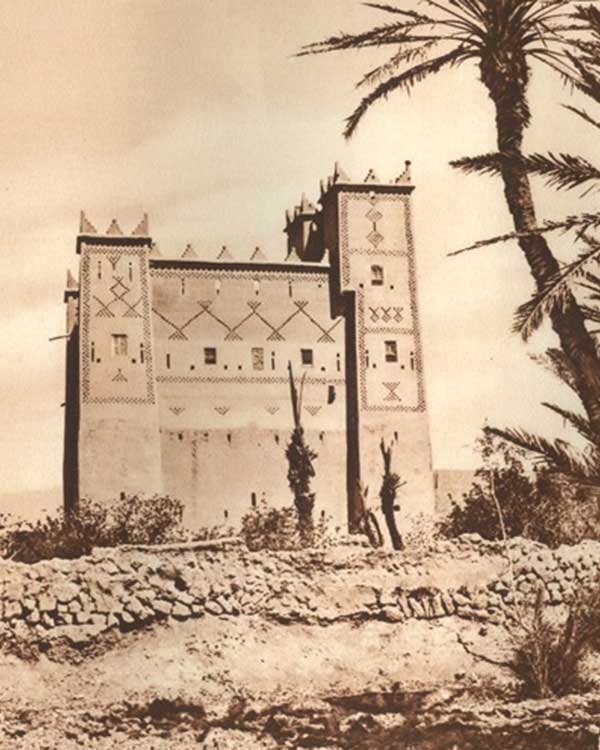
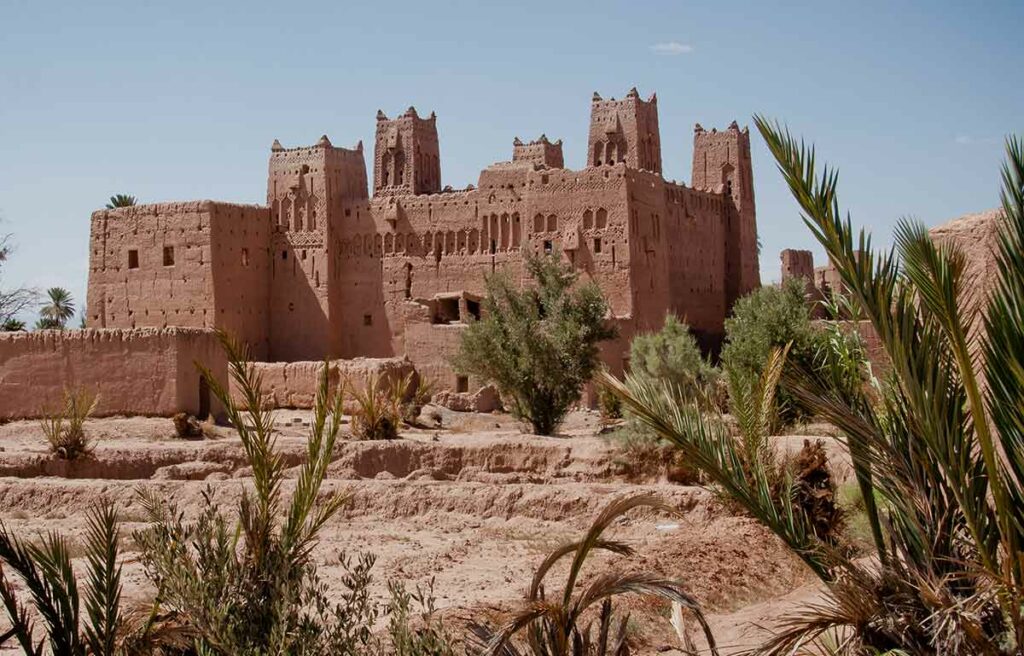
An architecture rooted in the oasis environment
Skoura reflects oasis architecture. Numerous hamlets are scattered within the palm grove, housing a population once subjected to provide labor for the local lord, the true master of the area, in the form of work in the fields and for the construction of kasbahs.
« The forced labor dictated our daily lives. We escaped from this burden only two days a week. »
Mohamed Mbarou
The hamlets adjoin the kasbahs, grand fortified residences built from the red earth called “tabia” in Amazigh. These kasbahs were symbols of power as they were inhabited by the notable figures of the territory, influential families who were nonetheless vassals of the reigning lord who held sway over the entire region. Examples include the Kasbah Si Abd El Kebir, once the Khalifa of Skoura, the Kasbah Mohamed Ben Hamadi, the Kasbah Ait Abou, and the Kasbah Ben Moro… All these fortified houses bear the names of the families to which they belong. The Kasbah Amridil, famous for having been depicted on the fifty-dirham banknotes, housed a renowned family of religious influence descended from the Naciria Zaouïa of Tamegroute.
A lire : The Naciria zaouia of Tamegroute, exploration of its genesis
These square-shaped kasbahs with towers at their four corners impose themselves with their grandeur and fascinate with the beauty of their architecture. The majesty of the walls and the precision of the proportions are complemented by harmonious decoration featuring splendid geometric designs: battlements with pyramid-shaped tops, friezes of arcades, motifs in bas-relief and haut-relief… Authentic ornaments in harmony with others newly introduced under Hispano-Moorish influence. These kasbahs are architectural masterpieces that highlight the skill of the local master craftsmen, these meticulous architects of earthen construction.
A crossroads of ethnic and cultural diversity
The inhabitants of Skoura are called the Ahl Skoura. Originally, they form an Arabized faction of the Amazigh tribes formerly known as the Masmouda, one of the three major Berber groups alongside the Zanata and the Sanhaja. A large part of this population is from the Tafilalt and Draa regions. During the reign of the Almohads, the inhabitants of the Skoura oasis were part of the Haskoura confederation, with its capital in Demnate. In addition to this element of the indigenous population, other communities, Arabs from the Beni Hilal and Beni Maâkil tribes, also settled in Skoura, enriching it with populations of African origin.
The population of Skoura was indeed truly composite, a real mixture of different branches of immigration that found themselves in this lush place to build a collective unified by time. A large part forms the common people, still called laâouam in the local Arabic, meaning populace. Then comes an important group of people called the haratines because of their agricultural know-how, their name literally meaning plowmen. This black-skinned population was therefore part of the farming class. They spread throughout the territories of the Draa and Tafilalt valleys and constitute a fundamental human component of the population and history of the southeastern region of Morocco.
The Haratines : known in Berber as Ismengen (singular: Asmeng) and sometimes referred to as Black Moors, denote black inhabitants of the Sahara. They are said to be descendants of black slaves brought from sub-Saharan regions like Sudan by Berber merchants, often as a result of raids conducted by the Tuaregs, or during the period of slavery in the Arab-Muslim world.
Another ethnic group with dark skin directly originating from Sudan and called Laâbid, literally meaning the slaves, traditionally handled household affairs. They constituted the servant class. Followers of the Gnaoua brotherhood, they carried on the traditions of this itinerant music and annually celebrated a spiritual tradition called Derdba, meaning drumming, starting from Douar Chebbaka to reach the tomb of the marabout Sidi Mbarek where they sacrificed an animal as an offering. Their music symbolized blessing and healing for the suffering among the inhabitants.
The Zaouias or Sufi brotherhoods also represented an essential component of the palm grove, a religious, social, and spiritual force. Their representatives bore significant names like Ezzaoui or Elmrabet, meaning religious or ascetic who has devoted himself to the contemplative life. This class was exempt from taxes, labor, and did not participate in inter-tribal conflicts. The buildings of these Zaouias served as shelters for the unfortunate, spaces for Quranic study as well as Quranic schools, and lodging for students. Their traces still exist today, such as the Zaouia Ait Sidi Rehhal and the Zaouia Si Abdelmoumen in the villages Kser Oulad Âamer, and the Zaouia Aït Si Yaâcoub in the Douar Ouled Brahim. However, a mysterious Zaouia persists in the stories told by the elders of Skoura, a Zaouia of the stone, the Zaouiat Lahjer. No one knows where it was located. It disappeared long ago, and only its name remains.
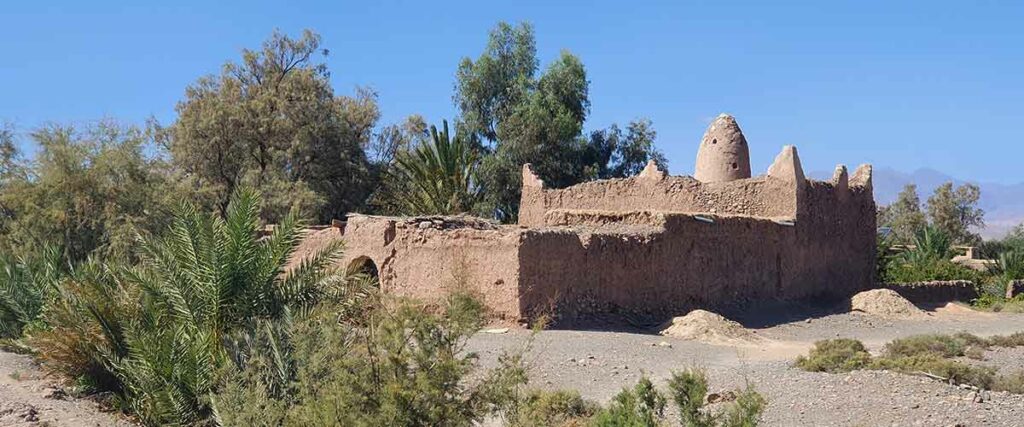
The cherished memory of the Jewish community of Skoura
Like in other areas of southeastern Morocco, the Jewish community was highly esteemed in the oasis of Skoura, even from the earliest times etched in the memories of the elders still alive today, suggesting that this population group directly contributed to the creation of the oasis, and certainly to its development over the years. Their significance is evidenced by their monopoly in trades ranging from commerce to craftsmanship, from manual arts to building construction. The Jews thus constituted an intrinsic human and cultural component integrated within the tribe of Skoura. Prominent Jewish family names residing in Skoura still resonate, such as Aït Mouchi Haroun, Aït Ben Âalia, Israel Ben Bihi, Ishak, Aït Âannou, Masâaoud, Mochi Haroun Hayoun, Haddou Ben Chaloum… This enriching presence endured for centuries and left visible traces, notably in their festive venues (El Hara) like in the douar Aoulad Âamer or in Jewish cemeteries such as those in the douar Boumehchad and the douar Ouled Yaâgoub, which literally means Sons of Jacob.
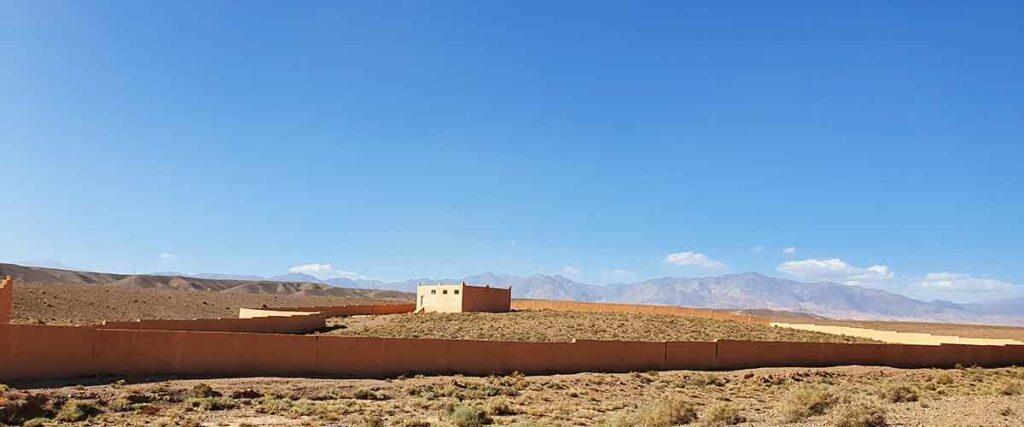
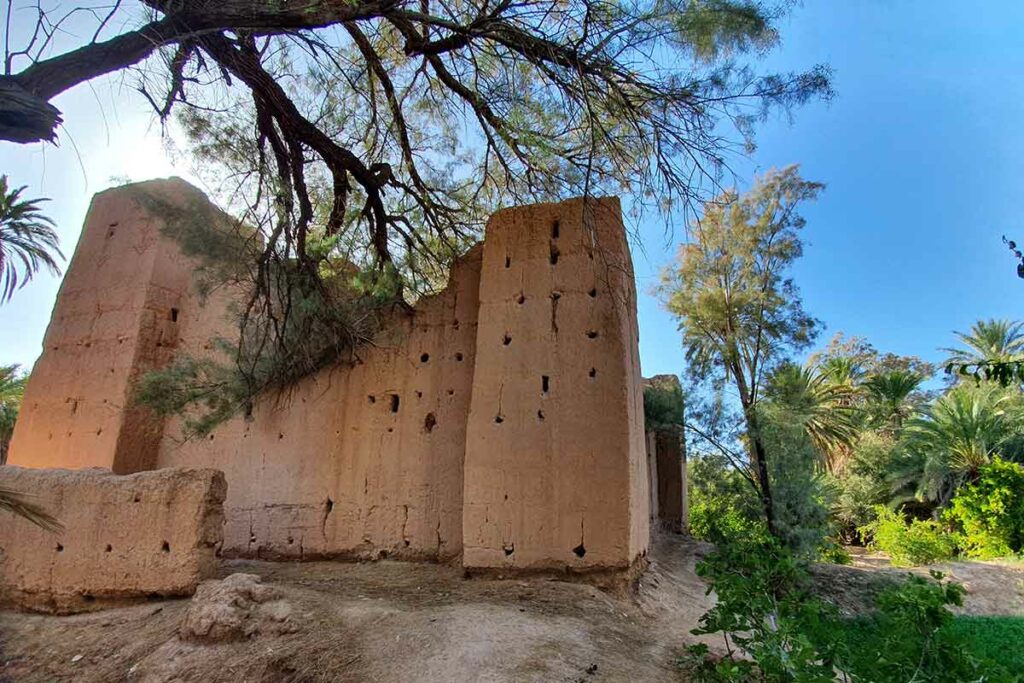
The Jews of Skoura celebrated their festivals such as the Mimouna at the end of the last day of Passover and the pomegranate festival known as Âid Erramman. Their revered saint, to whom they swore allegiance, was Moulay Ighi or Rabbi David Laskar, whose mausoleum is located in the village of Zerkten, in the Marrakech region. It is known that during those times of harmony, here in Skoura as in other living areas of the Southeastern region, the populations of Muslim and Jewish faiths from the same territory shared their traditional festivities with a spirit of mutual respect and affection.
Mohamed Mrabou still recalls his days living with the Jews in Skoura. He reminisces about that era, which was a vibrant part of his life and that of the entire Skoura oasis, once:
« The Jewish community was at the heart of the palm grove. We lived together as one family. The Jews were master artisans and great merchants. On the day of their unexpected departure, they sold all their belongings, fields, and houses. They were people of their word, serious, and honest…»
Mohamed Mrabou
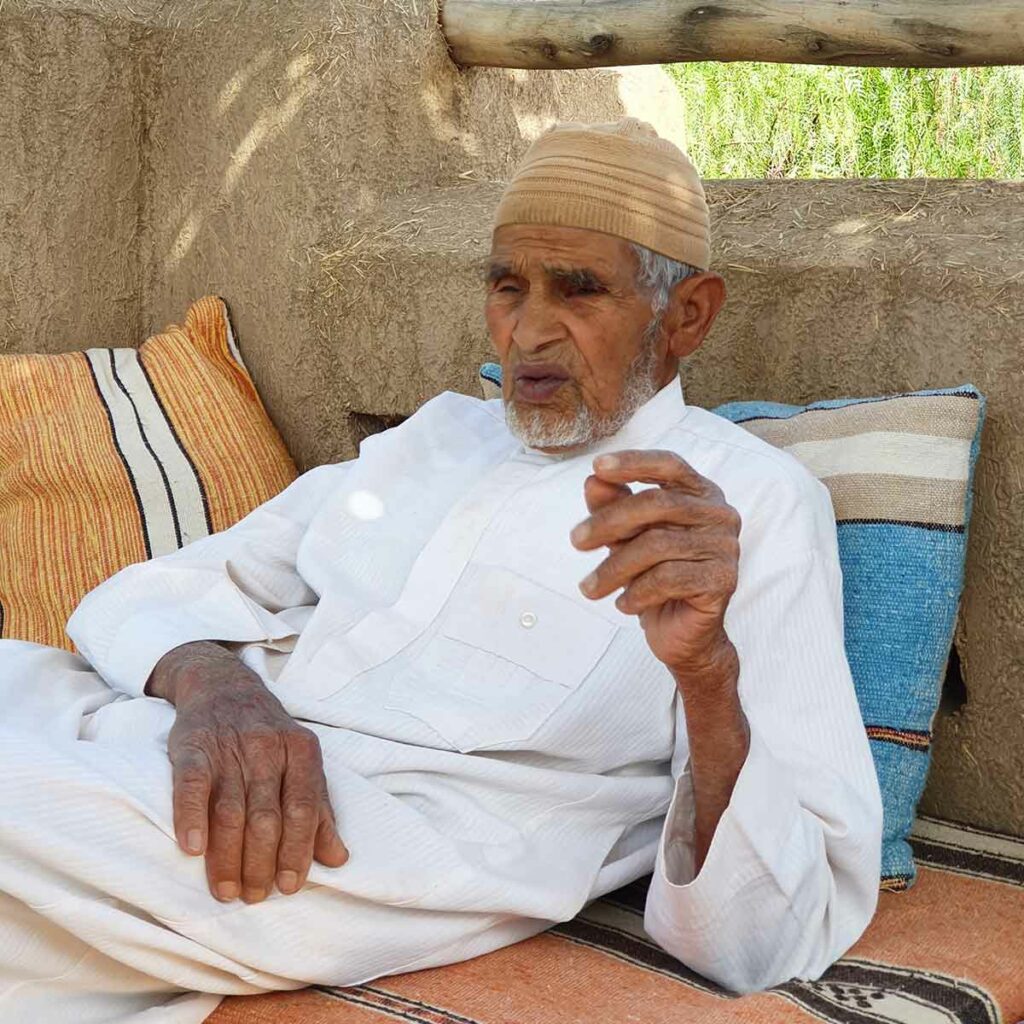
Such is the face of the palm grove of Skoura, an oasis rooted in the oldest traditions of Morocco yet still vibrant, radiating the most beautiful colors of this cultural mosaic that has shaped the identity and character of the Southeast region of Morocco.
